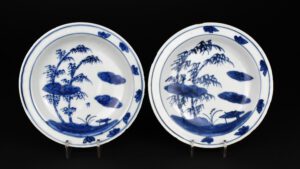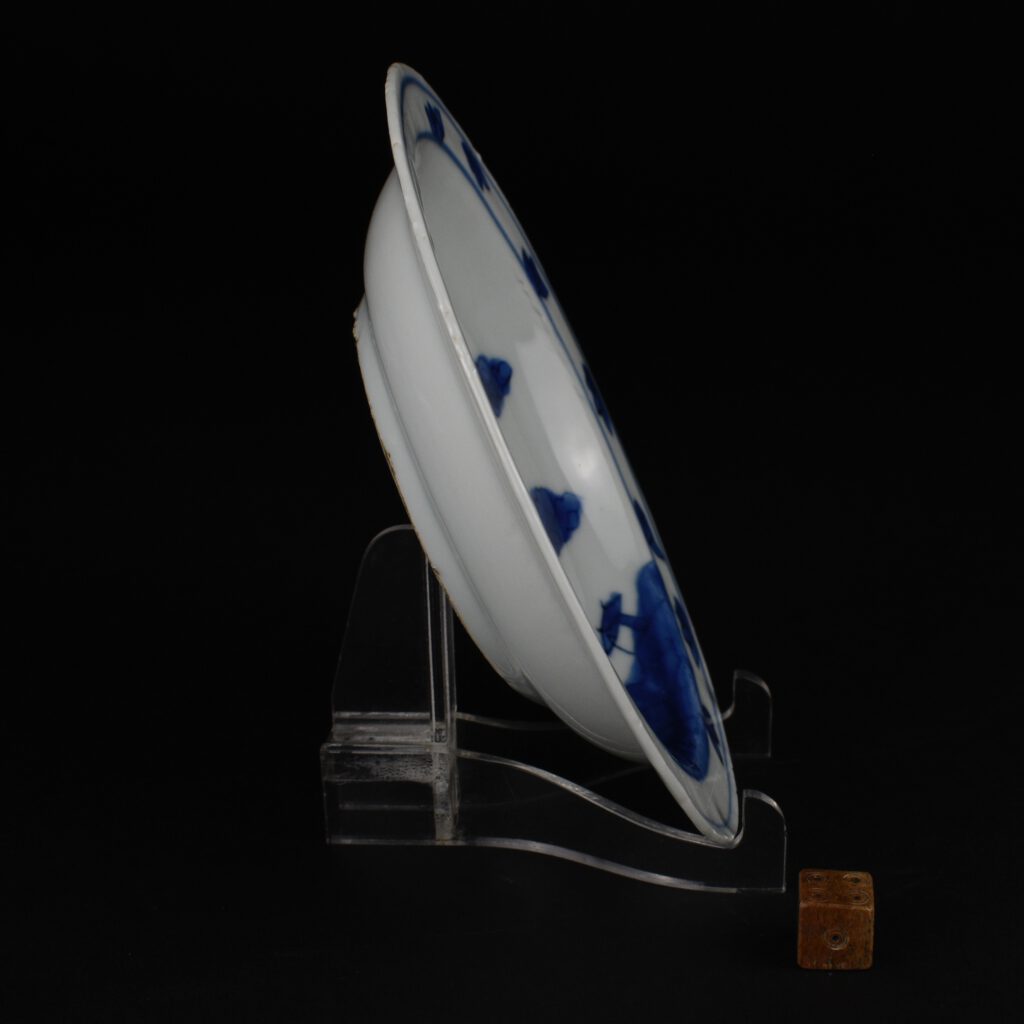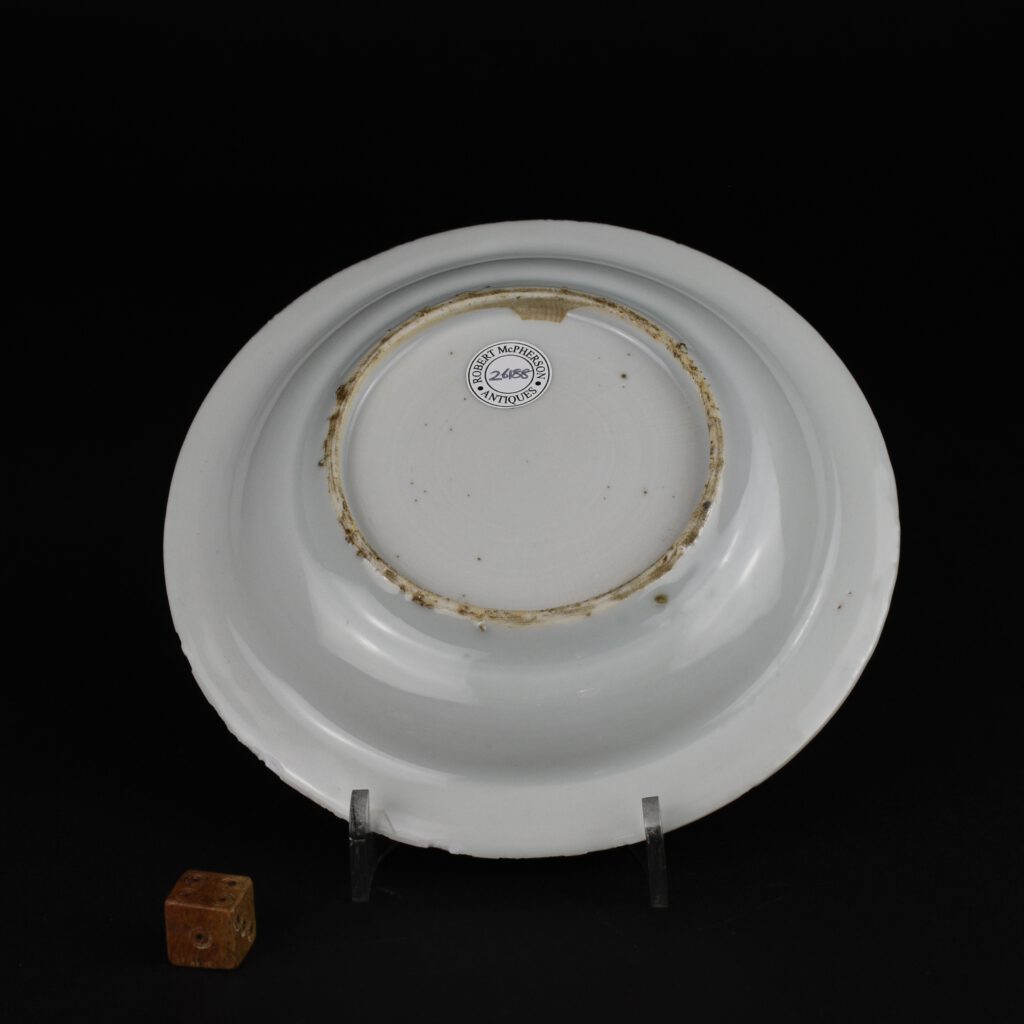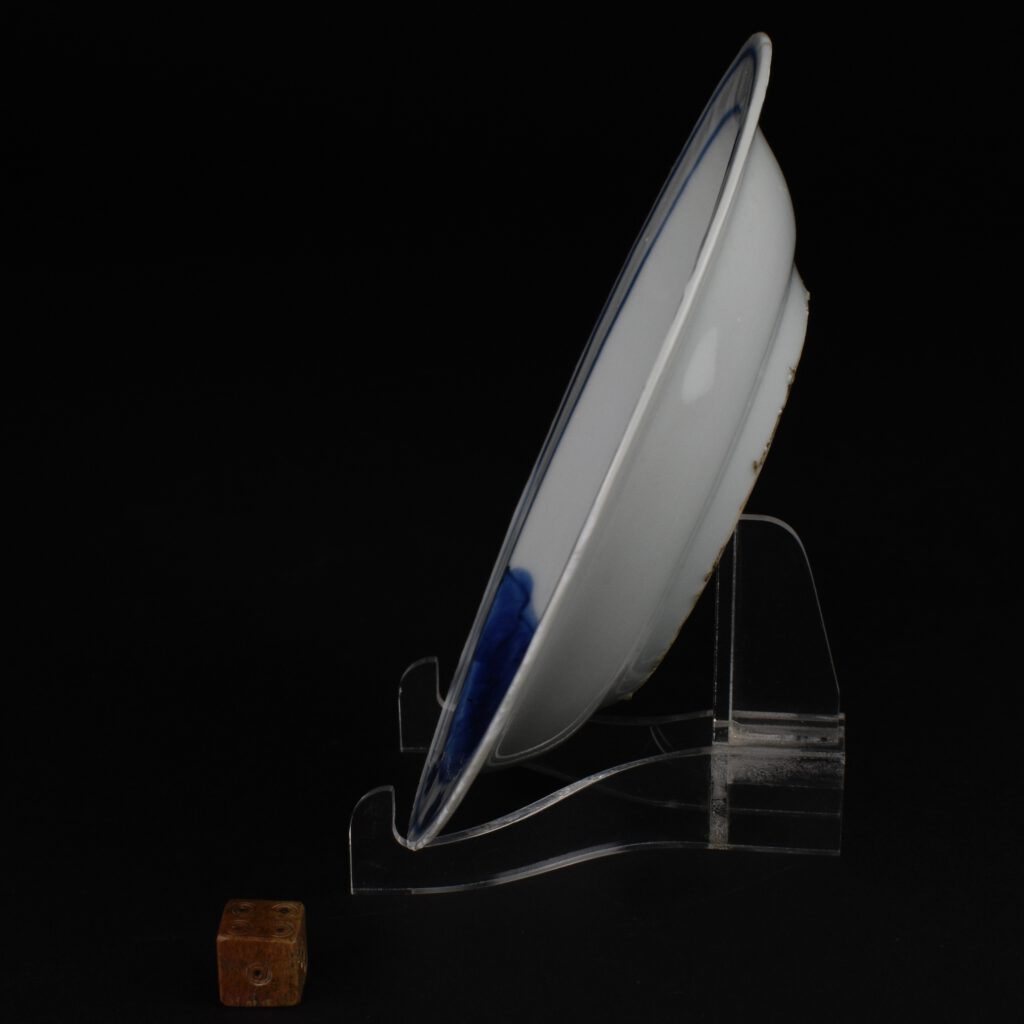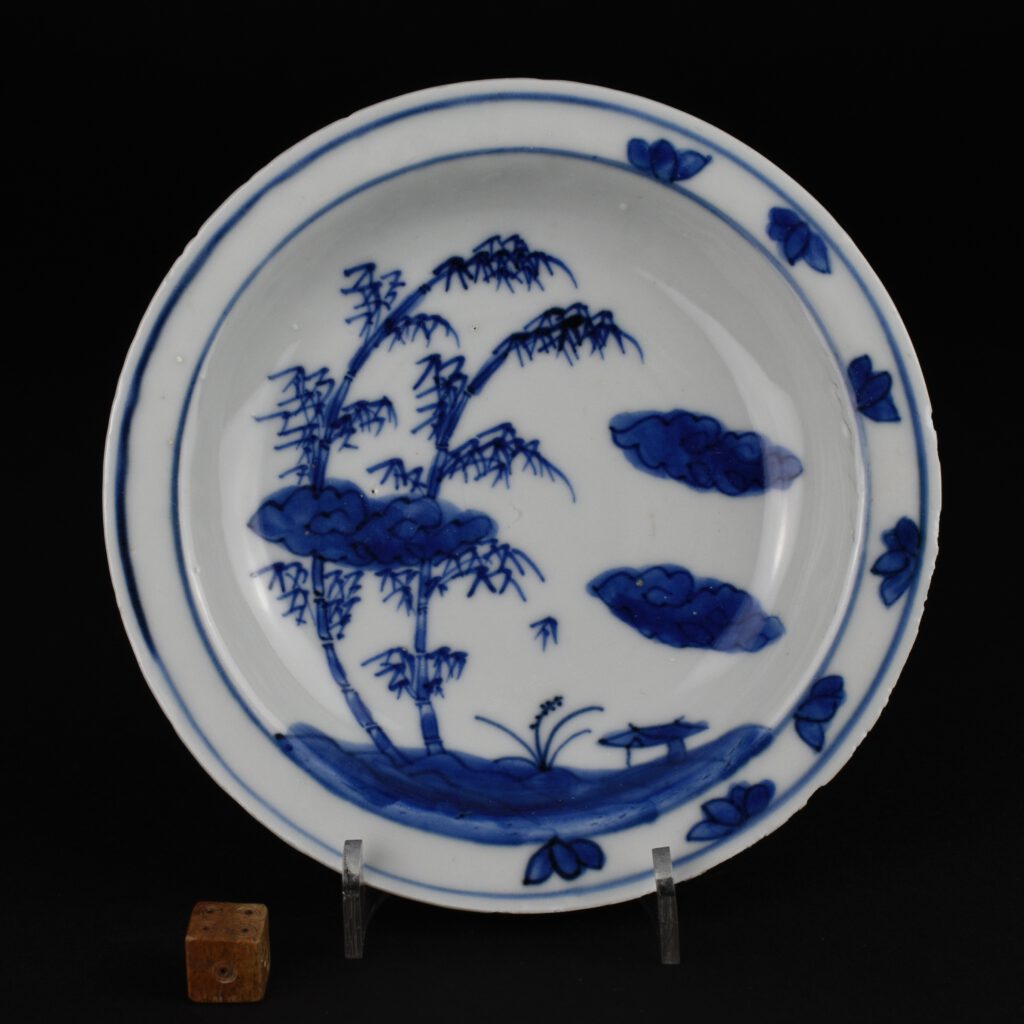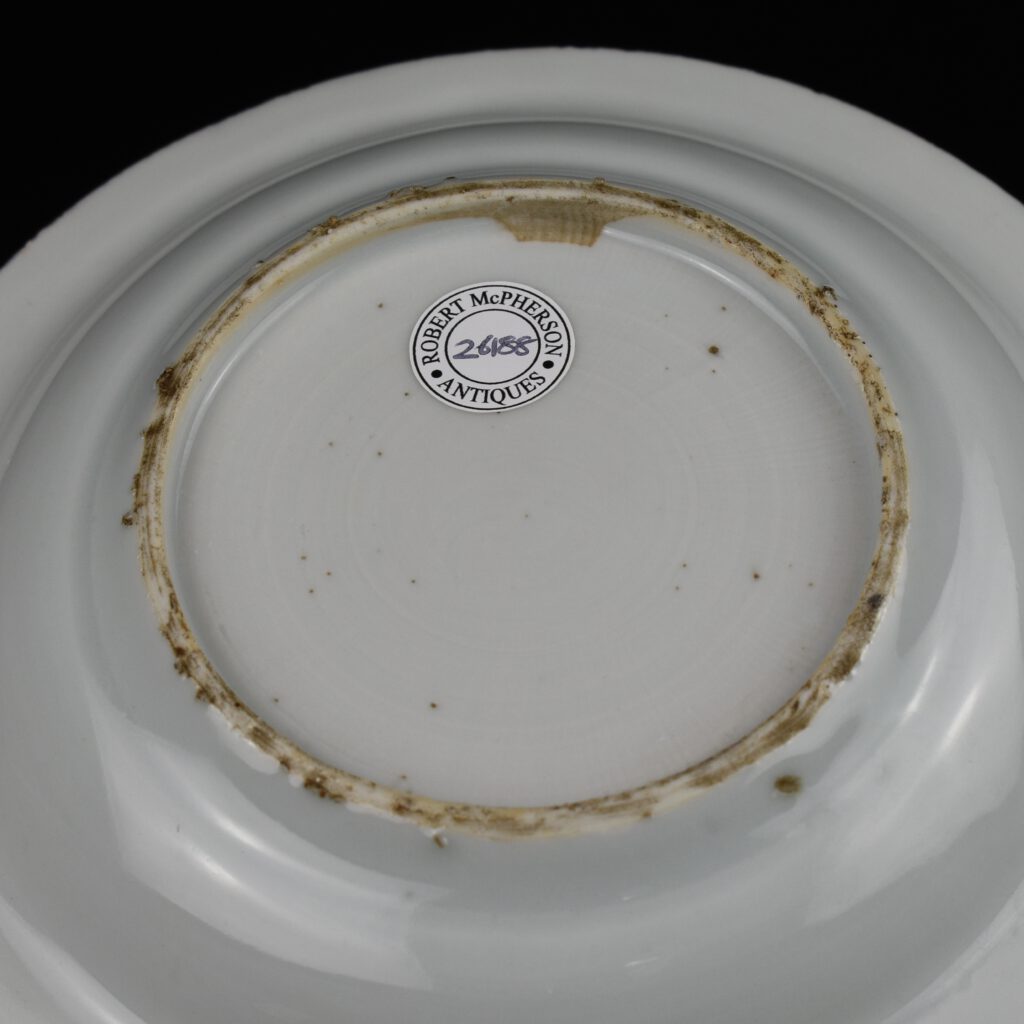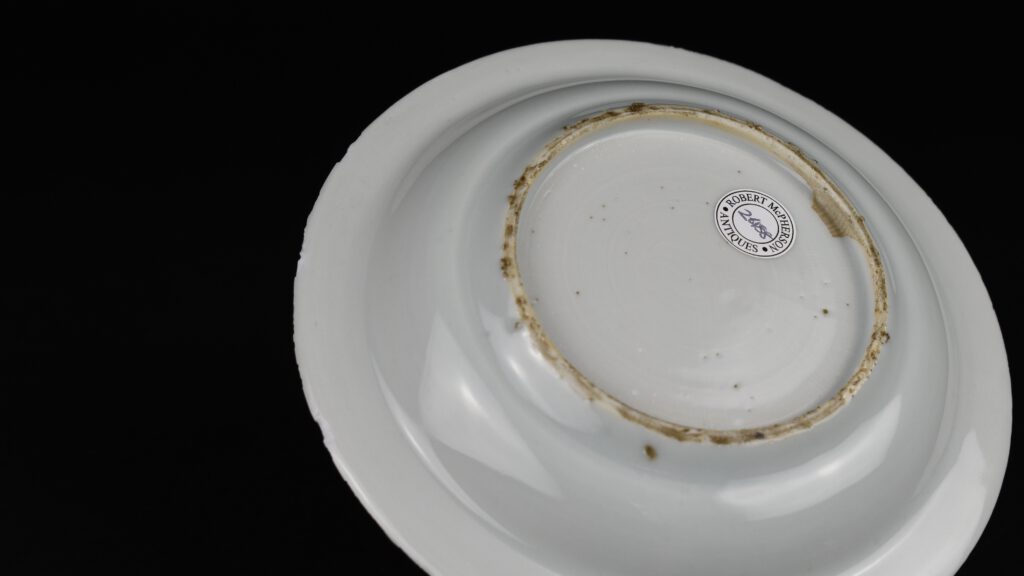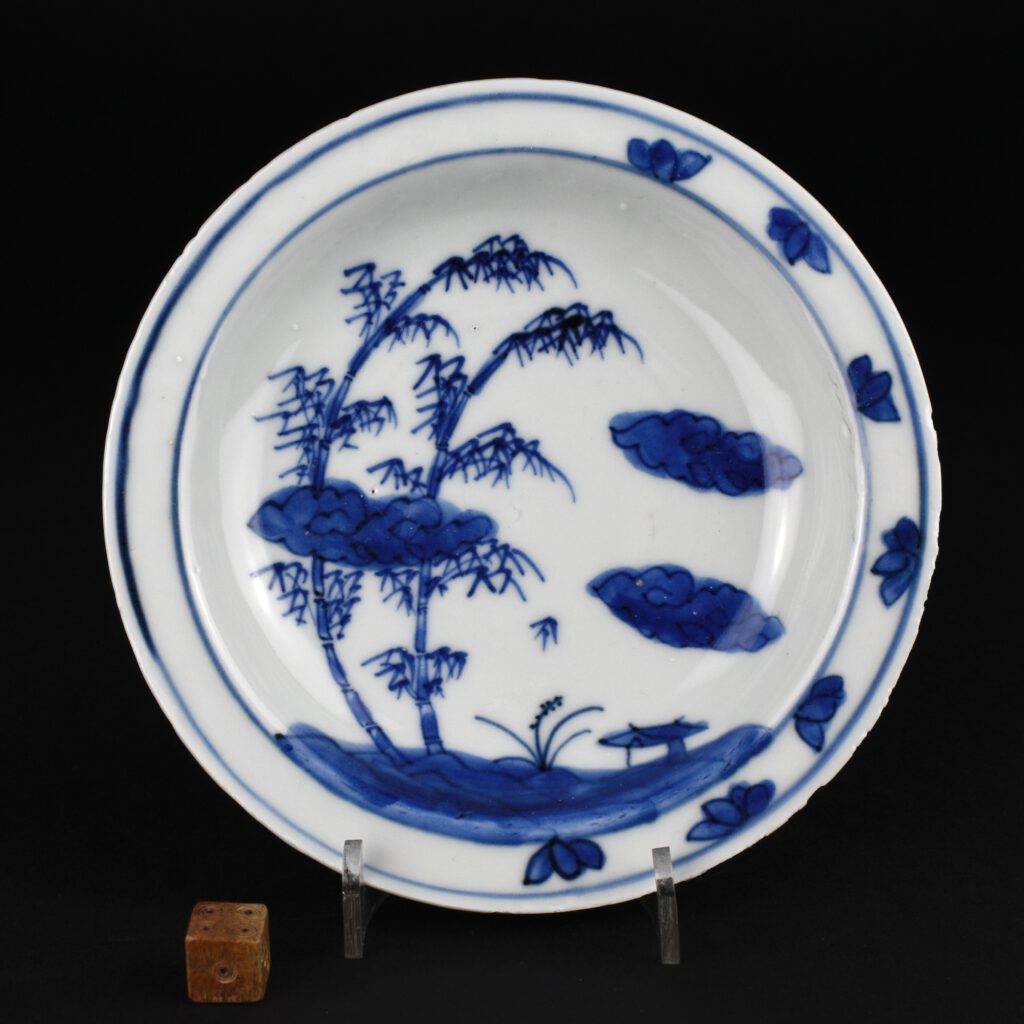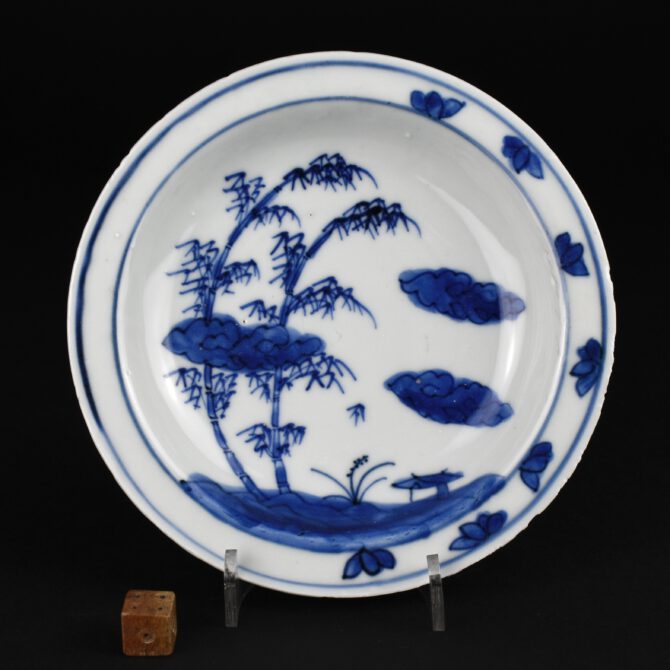
A Ming Porcelain Ko-Sometsuke Dish Made for the Japanese Tea Ceremony
A Small Ming Porcelain Dish in the Japanese Taste, Late Ming Period, Tianqi or Early Chongzhen c.1620 – 1630. This small Transitional porcelain dish was made in China at Jingdezhen to a design supplied by the Japanese. Small Ming porcelain dishes of this type were made for the Japanese tea ceremony meal, the Kaiseki. I think the asymmetrical petal design on the everted rim has been made more symmetrical by the Chinese painter. The central scene depicts clouds among bent bamboo with a small building to the right hand side. The term used for Ming blue and white porcelain for the Japanese Tea Ceremony is Ko-Sometsuke which means old blue and white.
SOLD
- Condition
- Rim chips, mostly to the reverse and some fritting.
- Size
- Diameter 14.6 cm (5 3/4 inches)
- Provenance
- N/A
- Stock number
- 26188
Information
Ming Porcelain for Japan :
During the late Ming Period the Chinese made a large among of porcelain for the Japanese market, it was made from the Wanli period (1573-1620) and ended in the Chongzhen period (1628-1644), the main period of production being the 1620`2 and 1630`s. The Ming porcelain objects produced were made especially for the Japanese market, both the shapes and the designs were tailored to Japanese taste, the production process too allowed for Japanese aesthetics to be included in the finished object. Its seams firing faults were added, repaired tears in the leather-hard body were too frequent to not, in some cases, be deliberate. These imperfections as well as the fritting Mushikui (insect-nibbled) rims and kiln grit on the footrims all added to the Japanese aesthetic. The shapes created were often expressly made for the Japanese tea ceremony meal, the Kaiseki, small dishes for serving food at the tea ceremony are the most commonly encountered form. Designs, presumably taken from Japanese drawings sent to China, are very varied, often using large amount of the white porcelain contrasting well with the asymmetry of the design.
